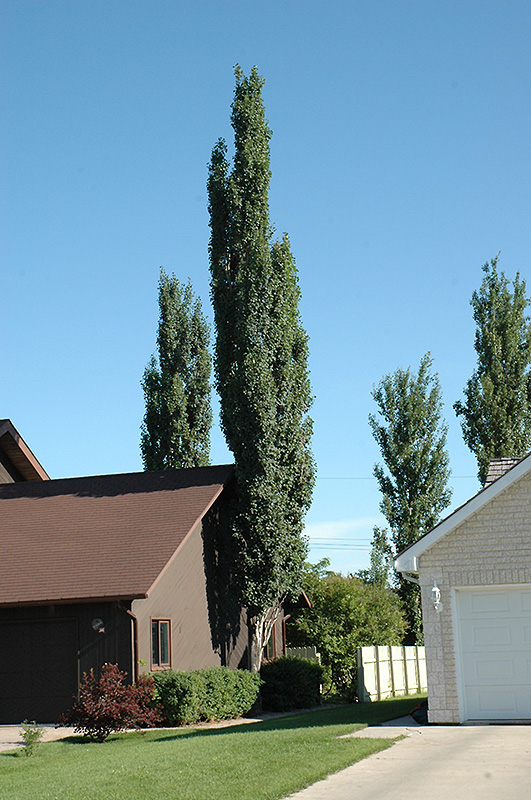Columnar Swedish Aspen
Populus tremula 'Erecta'
Height: 50 feet
Spread: 10 feet
Sunlight:
![]()
Hardiness Zone: 2a
Other Names: European Aspen
Description:
A tall upright spire-like tree, used primarily as a sharp vertical accent or in a row as a very tall screen; fast growing, but susceptible to bronze leaf disease where a problem; bold and formal in a landscape setting, effective when well used
Ornamental Features
Columnar Swedish Aspen is primarily valued in the landscape for its rigidly columnar form. It has forest green deciduous foliage. The serrated oval leaves turn yellow in fall. The furrowed gray bark adds an interesting dimension to the landscape.
Landscape Attributes
Columnar Swedish Aspen is a deciduous tree with a strong central leader and a narrowly upright and columnar growth habit. Its average texture blends into the landscape, but can be balanced by one or two finer or coarser trees or shrubs for an effective composition.
This tree will require occasional maintenance and upkeep, and usually looks its best without pruning, although it will tolerate pruning. Gardeners should be aware of the following characteristic(s) that may warrant special consideration;
- Suckering
- Disease
Columnar Swedish Aspen is recommended for the following landscape applications;
- Vertical Accent
- Hedges/Screening
Planting & Growing
Columnar Swedish Aspen will grow to be about 50 feet tall at maturity, with a spread of 10 feet. It has a low canopy with a typical clearance of 5 feet from the ground, and should not be planted underneath power lines. It grows at a fast rate, and under ideal conditions can be expected to live for 50 years or more.
This tree should only be grown in full sunlight. It is an amazingly adaptable plant, tolerating both dry conditions and even some standing water. It is considered to be drought-tolerant, and thus makes an ideal choice for xeriscaping or the moisture-conserving landscape. It is not particular as to soil type or pH. It is somewhat tolerant of urban pollution. This is a selected variety of a species not originally from North America.
